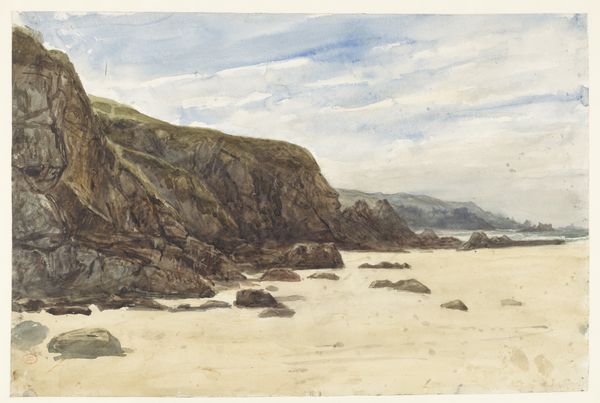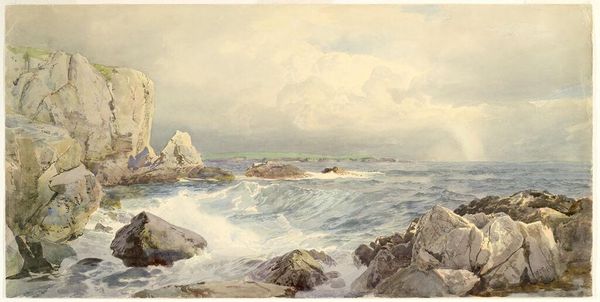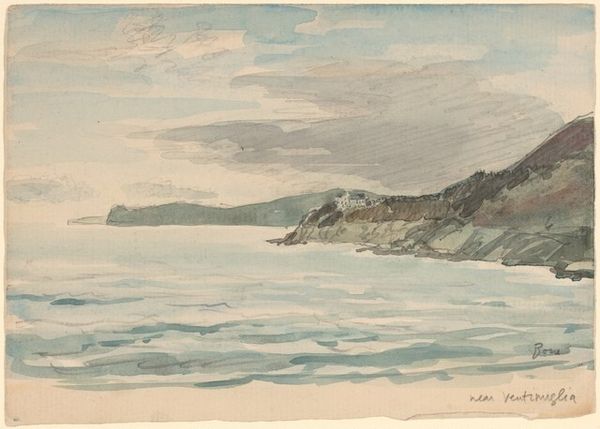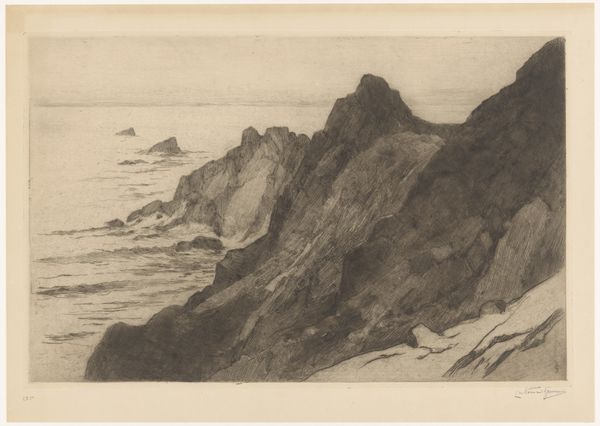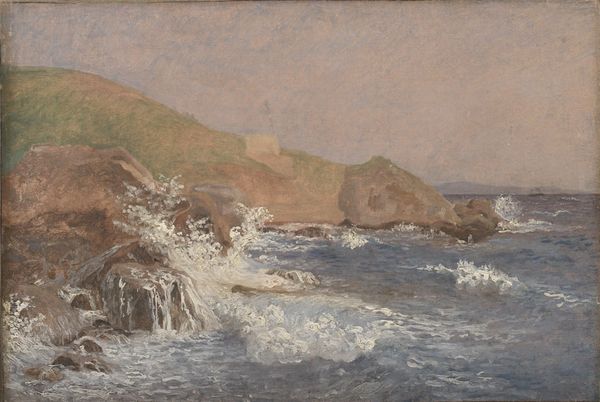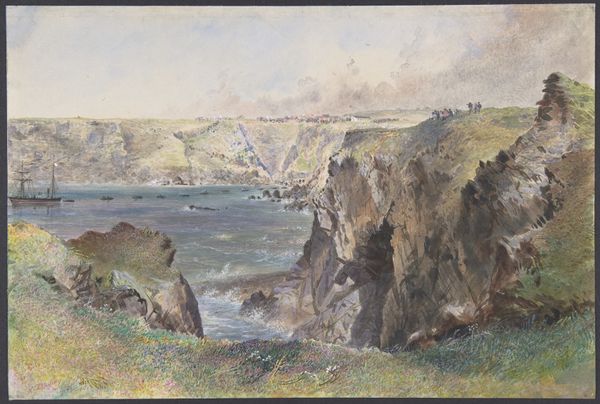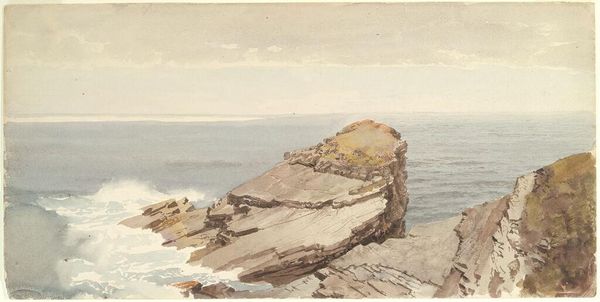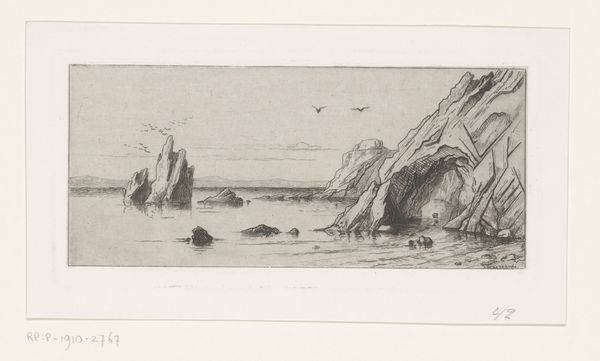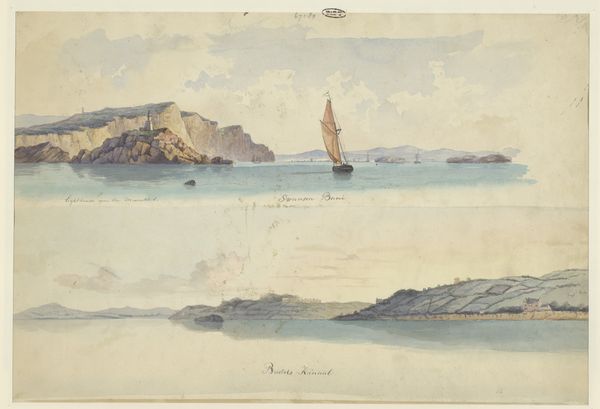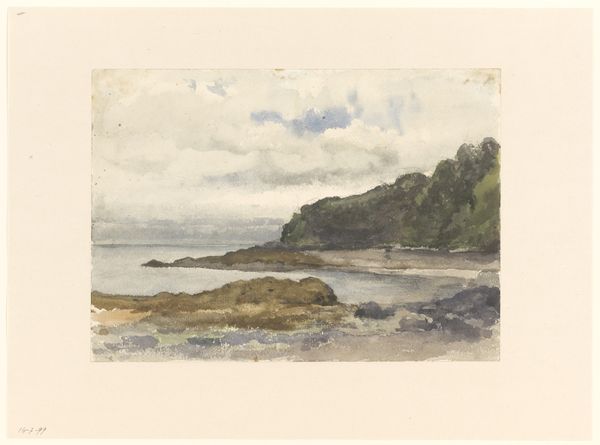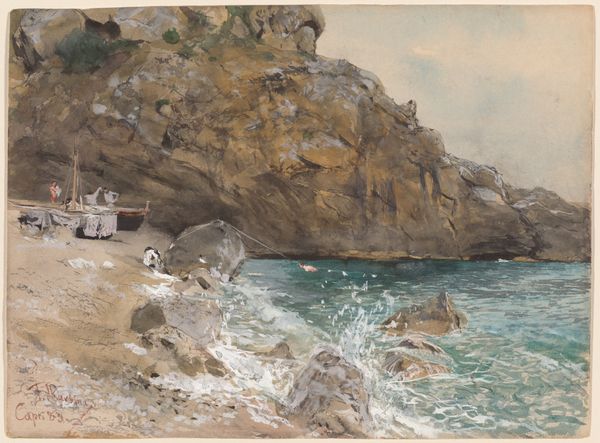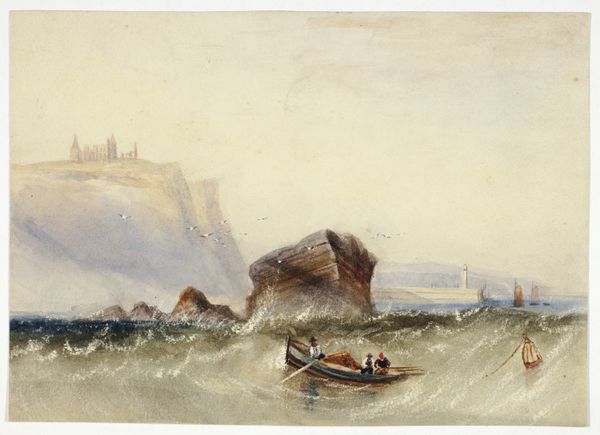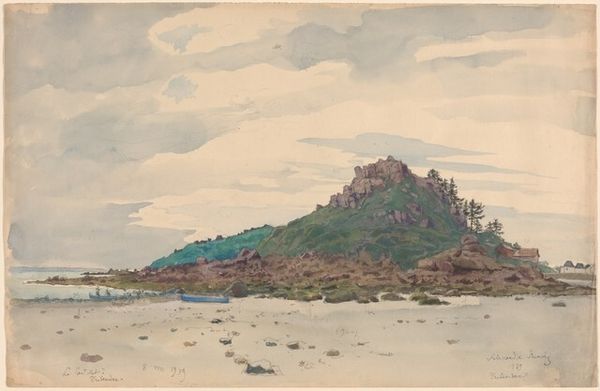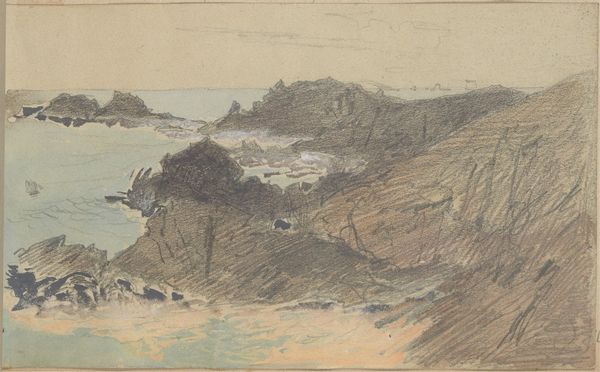
Dimensions: sheet: 13.49 × 18.42 cm (5 5/16 × 7 1/4 in.)
Copyright: National Gallery of Art: CC0 1.0
Curator: Here we have William Trost Richards's watercolor "Seascape with Rocks," created around the 1890s. What’s your first impression? Editor: Moody. The subdued colors give it an almost melancholic feel, like a scene remembered through a haze. There's a sense of nature's power in those craggy rocks meeting the relentless waves. Curator: It is interesting to observe how these rocks interact with the water and sky, it calls to mind the broader narrative of Romanticism. Consider, if you will, its intersection with the legacy of slavery in colonial America; it shows the need for freedom and respect. Editor: Right, I see a convergence. Rocks, in various traditions, often stand as symbols of endurance and strength, while the sea can represent the subconscious, the place of dreams, but also danger. In Richards' work, there seems to be an interplay between stability and fluidity. Are the rocks guardians? Curator: Certainly. They mark colonial trauma. We must view landscape painting not just as documentation but also through the socio-political contexts. What can seemingly passive landscapes actually articulate? Editor: It’s remarkable how a seemingly straightforward seascape can reveal deeper layers of meaning, connecting personal experience to broader cultural narratives. The waves even remind me of the cleansing rituals tied to various Afro-diasporic religions. Curator: And the fact that it's rendered in watercolor enhances this sense of ephemerality. The transparency of the medium mirrors the way memories and histories can be both present and elusive, ever shifting with the tides of time and interpretation. Editor: Richards really captures that essence. His detailed brushstrokes make those formidable rocks seem both unyielding and susceptible to weathering. Looking closer, I almost detect the subtle patterns that resemble cultural marks carved onto this rugged land. Curator: Richards offers a point of contemplation on the intersection of individual identity, colonial heritage, and social consciousness. The piece invites a reevaluation of landscape, prompting us to see not just nature but culture as well. Editor: Ultimately, his rocks aren't just geological formations; they become monuments to stories, resilience, and the ongoing negotiation of identities in the wake of history. Thank you for drawing my attention to that layer.
Comments
No comments
Be the first to comment and join the conversation on the ultimate creative platform.
